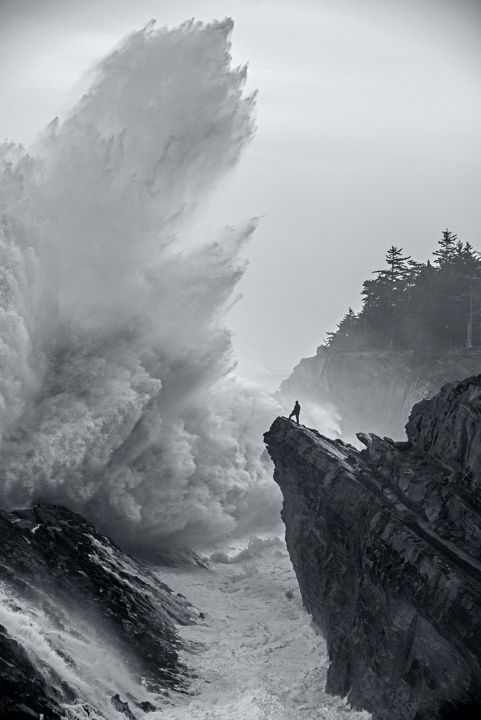Sugpiaq/Alutiiq spirituality centers around the concept that all things possess a human like being called a sua (it’s person). People followed rituals and spoke respectfully of the natural world and they, animals, to gain approval of the spirit of the things around them. The most important power was Llam Sua, the “person of the universe,” who was thought to be able to hear and see all things. Sugpiaq/Alutiiq people also believed in a host of supernatural beings such as mit’at (star people), imam sua (the spirit of the sea), and nunam sua(the spirit of the land). These spirits were said to take on an earthly form periodically, often to teach the humans a lesson about respecting the Earth and its creatures.
Taken from – Alaska State Museum – Juneau
While at the Alaska State Museum on Thursday, I read this from an interpretive sign and it inspired me for my region’s lesson. According to Sugpiaq/Alutiiq culture they believed spirits would sometimes come down and take an earthly form to teach humans lessons about respecting the earth. I would like to track down these stories and create a lesson that figures out a way to tie in indigenous ways of knowing with current climate issues facing Alaska.
My intended audience would be anywhere from 6th – 12th graders. The region covers the Southwest Maritime area of Alaska, and specifically social studies.
The lesson would be set up in three parts: first a lecture with background knowledge and primary sources of stories. The second would be a discussion facilitating the essential questions and making it reflective of indigenous ways of knowing specific to the environment and how humans interact with the earth. Then discuss the modern ways of life, the students own personal experiences. The third part would be the students creating their own stories reflecting on how humans treat the environment. I could have requirements of the story, still not completely sure of the form of the story, if I had lots of time we could do video storytelling, but that would be a longer lesson, etc.
The essential question? I haven’t nailed my essential questions down yet, I want the students to reflect on the indigenous ways of knowing specific to the environment and compare and contrast it to modern day tactics. *Need to figure this out!
For source material, I have a bit of research to do, finding stories to use as primary sources, or videos, and oral history.
The students will create their own stories…but part of me wants to spice this up, make it more relevant in their lives, maybe they could put together a play acting out all the stories as vignettes.
This is where I’m at, and I’m open to thoughts and ideas.

I like where this is going Shivani. Here’s few thoughts:
As far as the EQ – I think that this is all about how a group influences members to “play by the rules” (Today we run public service announcements on TV and billboards to influence behavior.)
Two ways to capture their stories:
1. they could create slideshow presentations with images to accompany their story then record a screencast that combined the slide / images with an oral voice over.
2. Create a live performance version of this. Make an image slideshow in PowerPoint and back project it on a big screen created in a framed bedsheet. Students stood in front of image and recite their lines while visual backdrop behind them illustrates it.
I really like the idea, I got excited about it from just reading your plan. I also thought the same thing as Peter where if you had the students give a live performance, it would really make it memorable and help them understand it better. I think that if you did this it would put them more into the realm of what you are trying to do and therefore it will really resonate with them. Cool idea!
When I look at this, I think of the potential ties to religion/spiritual practices from around the world. Do you remember when the Elder Paul Marks talked about how Tlingits know to respect their resources because the spirit of the resources remember how people treat them? The spiritual component to this adds to a sense of accountability for human beings to be caretakers of our land. I also look at Shinto religion in Japan, where they believe that every aspect of nature is guarded by a spiritual being (whoa can I recommend you watch some Miyazaki movies? Spirited away, Nausicaa, all have deep messages about environmental justice) What if you had students not just create stories, but also develop characters, or “gods” if you will, to show how human beings address the issue of accountability towards environmental justice? This is a great lesson proposal, Shivani, and it keeps making me think of how when human beings see that there is something beyond the physical/tangible aspect of nature (exploiting its parts just for function), there is an appreciation that can be developed. Just throwing out thoughts.
I like this! I think it is a great start- and I feel like we all are going to overlap nicely with our lessons and subject area. I think you could include a culture somewhere else that may have a similar story as a fun parallel- and see how they, too, are adapting to changing climates.